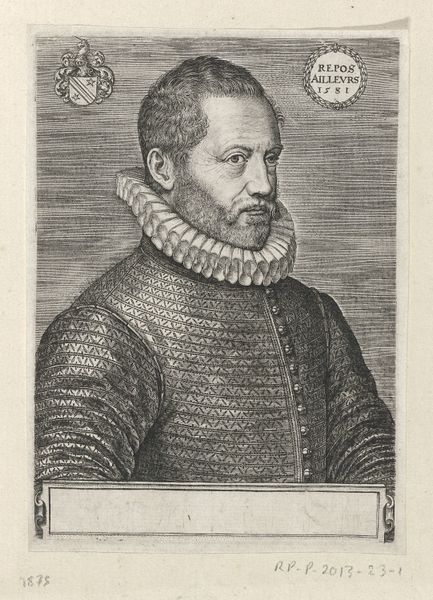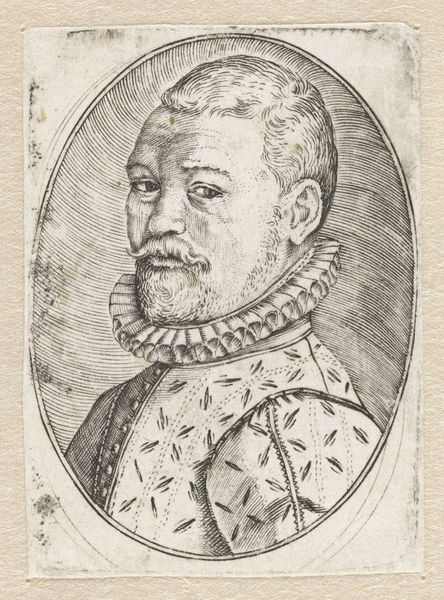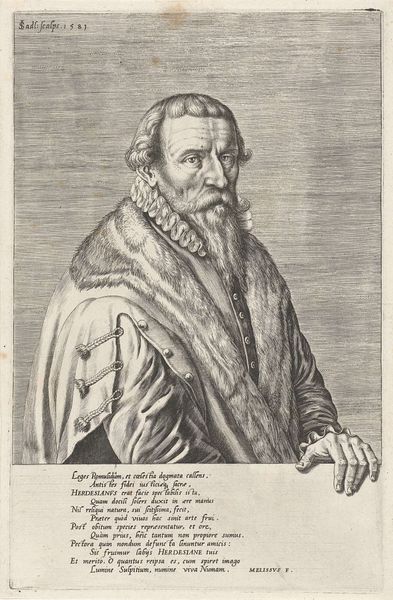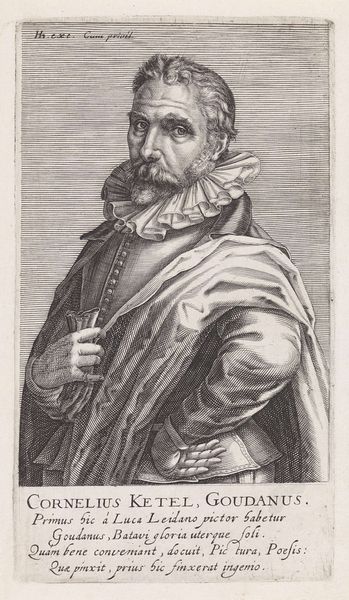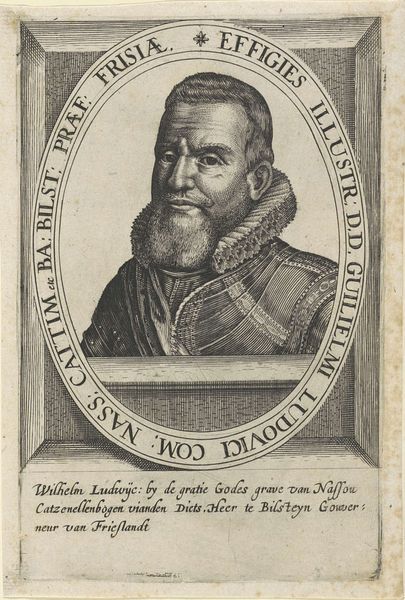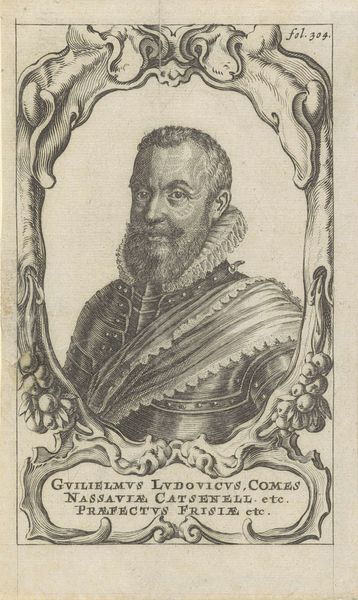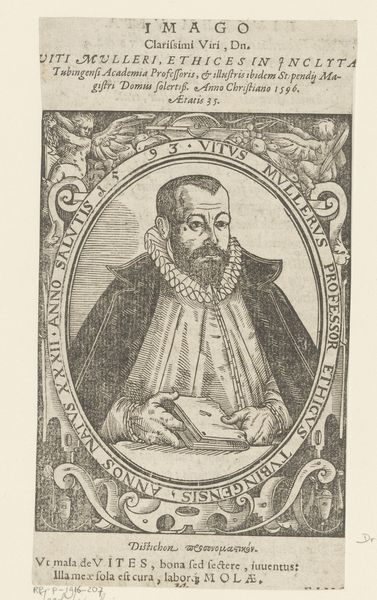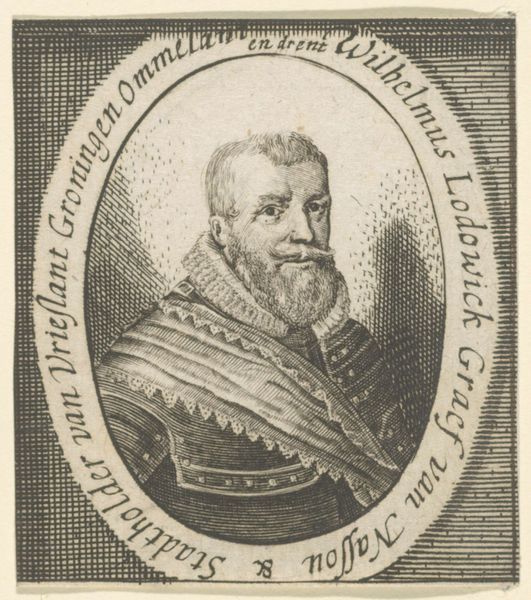
engraving
#
portrait
#
11_renaissance
#
northern-renaissance
#
engraving
Dimensions: height 149 mm, width 116 mm
Copyright: Rijks Museum: Open Domain
Curator: Here we have a remarkable engraving titled "Portret van Jan Baptist Houwaert" dating from before 1583, attributed to the artist Wierix and housed right here at the Rijksmuseum. Editor: The somber expression is striking. It's a really interesting contrast with the meticulously detailed ruff and fur trim, which feels almost oppressive, and the sitter's pale and rather large hands add a very human touch to such an aristocratic display. Curator: Indeed. Jan Baptist Houwaert was a prominent figure, a rhetorician and playwright in Antwerp during a tumultuous period of religious and political upheaval. It's vital to note that Wierix was not merely depicting Houwaert; these images were produced and circulated in a time of religious conflict as forms of political assertion. Editor: So the portrait is a constructed identity then. And how do we read the symbols laid out on the table? What's their role? Curator: Precisely. The compass, set square, and laurel wreath hint at Houwaert's intellectual and artistic pursuits. It's worth investigating what happens when powerful people start commissioning and controlling their own representation, shaping how they wish to be perceived by contemporaries and later generations. These symbols are potent cues. Editor: Thinking about visual culture, it's intriguing how this portrait is an object that performs authority. It reminds me of the broader Renaissance preoccupation with portraying civic virtue and intelligence through a standardized system of iconographic props. Curator: Certainly. Looking closely at his robes, we can examine social mobility, class distinction, and the reinforcement of power. His dress becomes a physical signifier of identity. Editor: The stark contrasts created through the engraving really highlight these details, almost to a theatrical effect, but the use of simple colors renders him static and still, which somewhat brings him back to a sense of solemnness. Curator: Yes, the portrait provides fertile ground to better understand image making as a way to convey legitimacy. The portrait really stands as a cultural object which performs complex narratives. Editor: Absolutely. There's so much to unpack about the relationship between representation, power, and the individual within this captivating portrait.
Comments
No comments
Be the first to comment and join the conversation on the ultimate creative platform.

